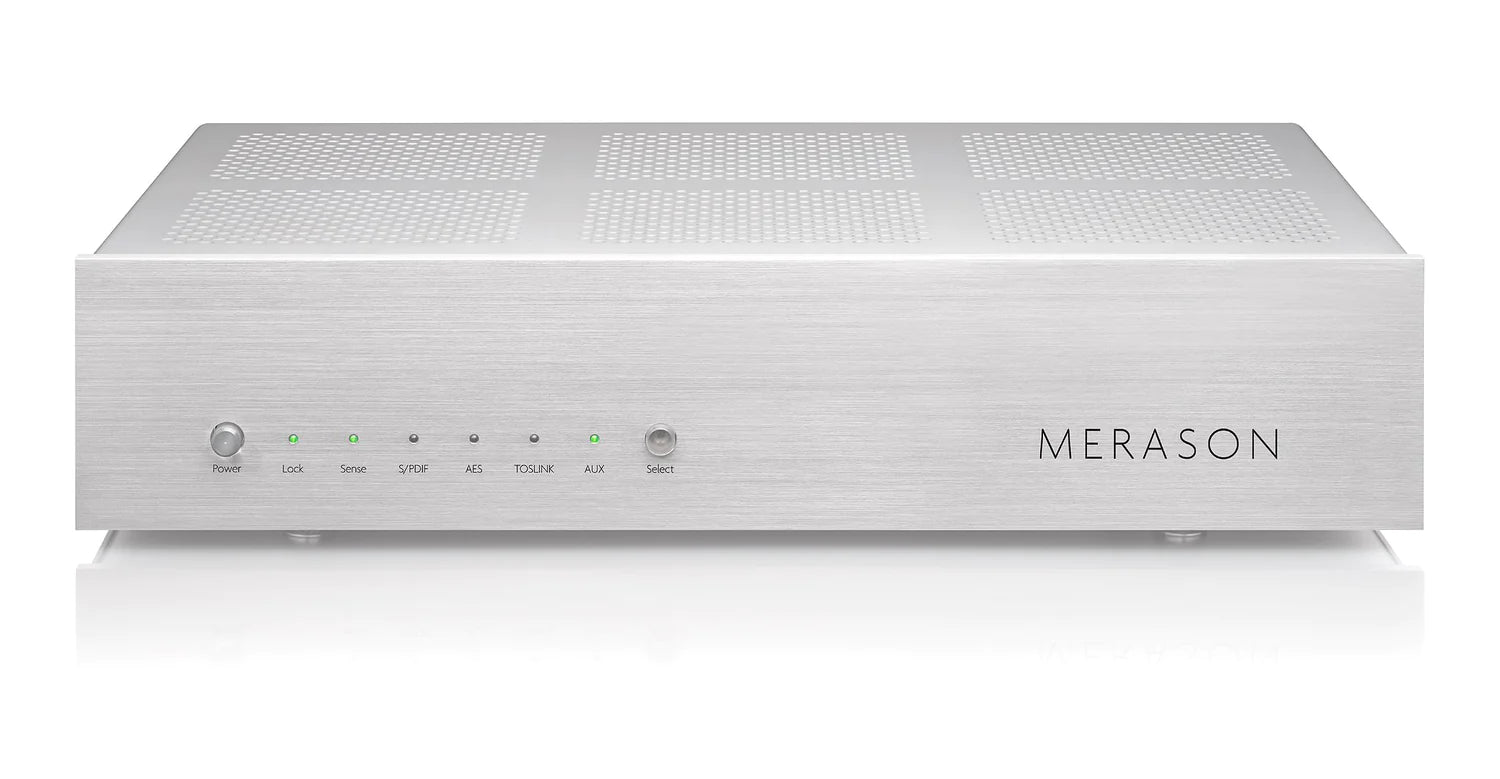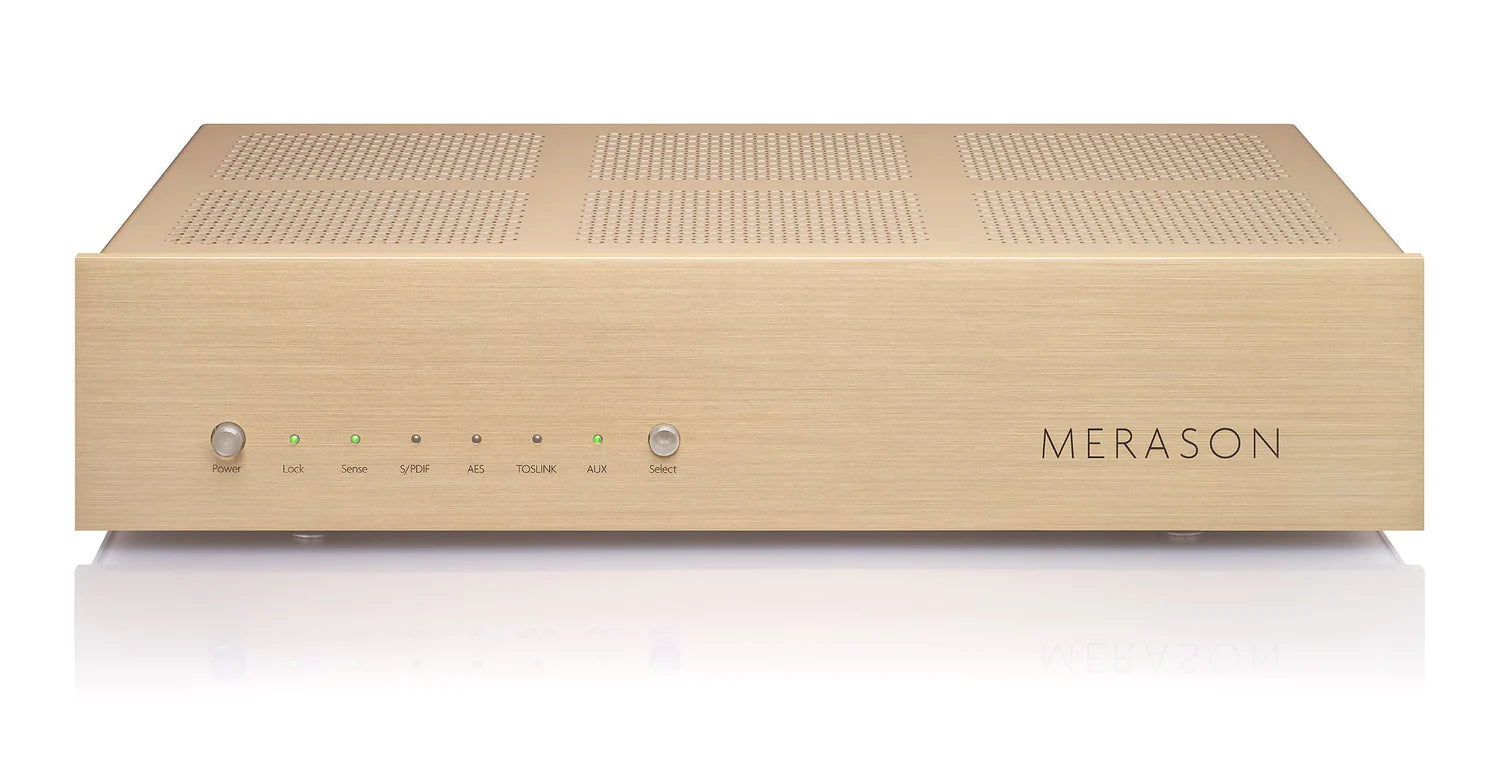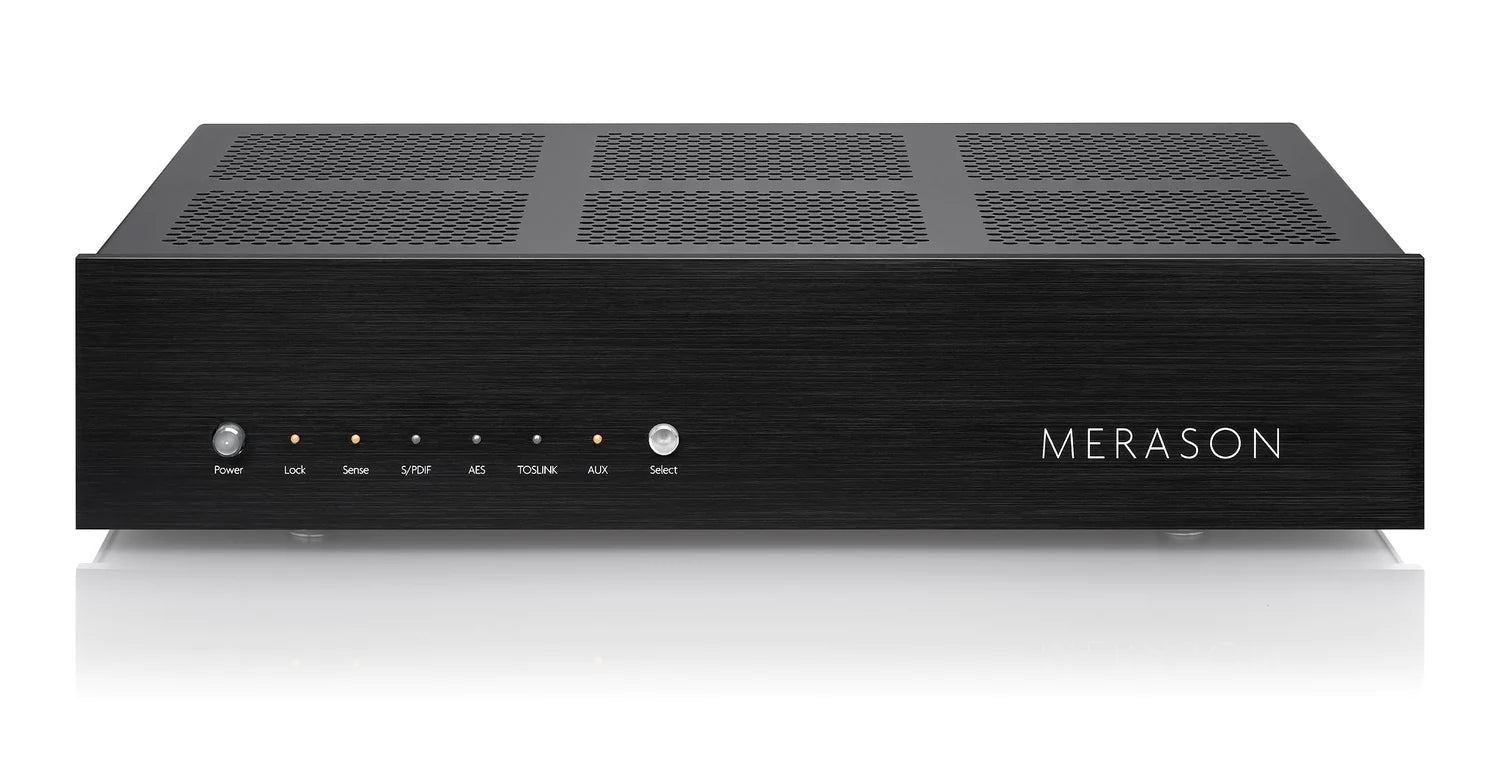



MERASON DAC1 mkII DAC
The Merason DAC-1 mkii is a new design. The structure and routing layout of the PCB was entirely re-designed resulting in a significantly reduced impedance and loss-free power supply delivery to each individual component. In addition, the shielding against external interference was also greatly improved. The new DAC mkii is a serious contender for the best DAC under $13,000.
Shipping times may vary between 1 to 4 weeks depending on vendor supply and other factors. Please text or call 651-217-2083 to find the most accurate fulfillment times.
Shopify Payments is one of the most secure processors available, using 128-bit SSL encryption technology to protect your information during checkout.
Will this product work in my system? We want you to feel great about your purchase. Many of our products are eligible for a ten day home audition. This allows you to test out the product in your home system, risk free, before you buy. Call or email for details.
Choose options




Customer Quote
“I sold my mojo audio mystique v3 over a year ago and have been on a constant search trying to replace it. I’ve tried many dacs, many more then I care to admit and finally found a dac that just plays beautiful music. No fatigue, no bloat, no fireworks, just good warm and at the same time detailed and dynamic music. No MQA, no DSD just 16/41 to 24/192. It’s the Swiss built Merason Dac1.
The dac has a huge soundstage deep and wide, never ever bright with the perfect amount of detail. Bass is full sounding which helps to provide a great foundation of the music. This dac is very large sounding with plenty of meat on the bones.
If anyone is shopping for a dac in the $5000 to $6000 range this is a great very musical fun dac to audition and own.
Some of the dacs I’ve tried are the Denafrips Terminator, Holo Audio May kte, Sw1x tube dac, Sonnet Morpheus, Metronome Le Dac, Aqua La Scala Optologic, and a couple more lesser dacs.
The Merason Dac1 is a better fit in my system to my ears than any of these and of course others mileage may vary.
Blaine”
— DAC1 Owner Blaine
DUAL MONO MODE
Because of their special architecture, but ultimately from a purely sonic point of view, Daniel Frauchiger decided on two Burr-Brown PCM1794-A converter chips. In mono mode, the DAC uses one for each stereo channel. In this way, the PCM1794A has a dynamic range of 132 decibels. That is five decibels more than a stereo circuit with just one component.
FULLY SYMMETRICAL SIGNAL OUTPUT PATH
The analog signal processing is consistently symmetrical from the converter module to the output. Low-pass filters with high-quality, expensive silver mica capacitors and coupling capacitors are located between the converter module and the output as a safety measure against unwanted DC voltage. Great attention was paid to the layout of the motherboard so that the extraordinarily high signal-to-noise ratio could be achieved.
SEPARATE MULTIPLE POWER SUPPLY RAILS
A separate, generously dimensioned transformer is responsible for the digital circuit. The rectified voltage is regulated to two 5 volt rails, and then five independent 3.3 volt rails. The analog circuit is fed by the second transformer.
The controller is discreet and is characterized by an extremely low interference voltage.
HIGH QUALITY INPUT INTERFACES
The USB input is realized with a high quality board from Amanero, the Combo 384, a board known for its musicality.
The Amanero board has two precise oscillators, one for the multiples of 44.1 kilohertz, one for the multiples of 48 kilohertz. It provides a cleanly clocked I2S signal with minimal jitter at the output.
The I2S signal is sent to the two converter chips in a galvanically isolated manner using a capacitive isolator module.
The signals arriving at the AES and S / PDIF sockets are galvanically isolated by a transformer. The clock of these signals and that of the Toslink signal is refreshed by the receiver module, a WM8804 from Wolfson or Cirrus Logic, using a quartz module and PLL, so that the jitter is also minimized here, and then passed on to the converter modules as an I2S signal.

Sampling rates
PCM: 44.1 / 48 / 88.2 / 96 / 176.4 / 192
Bit depth
24 bit PCM
Digital inputs
USB2, S / PDIF (RCA), Toslink (optical), AES / EBU (XLR)
Analog outputs
1 pair unbalanced (RCA), 1 pair balanced (XLR)
Colour
Black or White
Dimensions (w / d / h)
45 x 10 x 29 mm
Weight
8 kg
“Its pleasant tonality conveys a bit less aggressiveness, but does not swallow any details. Individual instruments and the overall sound are timed a touch darker. But I find it difficult to classify that as more correct or less authentic. This is because certain instruments, such as a TomTom, appear more three-dimensional. The overall impression is crucial. The Merason convinces with fine or solo instrumentation, for example when reproducing a grand piano or a woodwind instrument. Because both in the timbre, As in the size and space representation, the Merason’s performance seems to me to be true to the truth.”
— Hifi Statement



